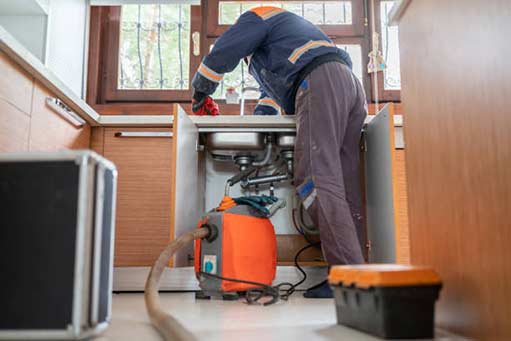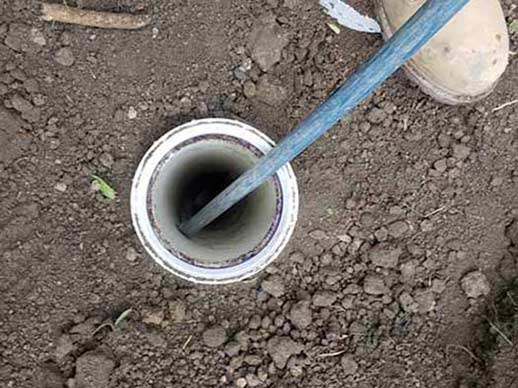Why Cleaning Your Sewer Line and Drains This Spring is Essential for a Healthy Home
As the weather gets warmer and the flowers start to bloom, it’s time to think about spring cleaning. While you may have already planned to clean your closets, organize your garage, and freshen up your home, there’s one important area that often gets overlooked – your sewer line and drains.
Keeping your sewer line and drains clean is crucial for maintaining a healthy and functional home. Neglecting this important maintenance task can lead to a variety of issues, including clogs, backups, and even sewer line damage. In this article, we’ll discuss the importance of cleaning your sewer line and drains, and provide you with some tips to keep them in top shape this spring.
The Importance of a Clean Sewer Line and Drains
Many homeowners don’t realize that their sewer line and drains require regular cleaning. Over time, debris, grease, hair, and other substances can accumulate inside your pipes, causing blockages and restricting the flow of wastewater. This can result in unpleasant odors, slow draining sinks and showers, and in some cases, sewage backups.
A clogged sewer line can be a major headache to deal with. Not only does it cause inconvenience and disruption to your daily routine, but it can also lead to costly repairs if left untreated. By taking the time to clean your sewer line and drains regularly, you can prevent these issues from occurring and ensure the proper functioning of your plumbing system.
Tips for Cleaning Your Sewer Line and Drains
Cleaning your sewer line and drains may sound like a daunting task, but with the right tools and techniques, it can be relatively easy. Here are some tips to help you get started:
Use a Plunger
One of the easiest ways to unclog a drain is by using a plunger. Fill the clogged sink or bathtub with enough water to cover the plunger’s rubber cup. Place the plunger over the drain and push down firmly, then pull up quickly. Repeat this process several times to help dislodge the clog. For tougher clogs, you may need to use a plunger specifically designed for toilets.
Try a Homemade Drain Cleaner
If your drains are running slow but not completely clogged, you can try using a homemade drain cleaner to clear out any buildup. One popular method involves pouring a mixture of baking soda and vinegar down the drain, followed by hot water. The chemical reaction between the baking soda and vinegar can help break up small clogs and remove residue.
Use a Plumbing Snake
If you’re dealing with a stubborn clog that the plunger and homemade drain cleaner can’t handle, a plumbing snake can be a useful tool. A plumbing snake, also known as a drain auger, is a long, flexible wire that can be inserted into the drain to break up or remove the clog. Gently push the snake into the drain and turn the handle to navigate it through the pipe. Once you feel resistance, rotate the snake to hook onto the clog and pull it out.
Consider Professional Drain Cleaning Services
If you’re facing persistent clogs or notice sewage backups, it may be time to enlist the help of a professional drain cleaning service. Professional plumbers have the knowledge, experience, and specialized equipment to effectively clean your sewer line and drains. They can perform a thorough inspection, identify any underlying issues, and provide targeted solutions to keep your plumbing system in optimal condition.

Maintaining Clean Sewer Line and Drains
Once you’ve successfully cleaned your sewer line and drains, it’s important to take preventive measures to maintain their cleanliness. Here are some tips to help you keep your sewer line and drains running smoothly:
Avoid Dumping Grease Down the Drain
Grease is one of the leading culprits of clogged drains. When grease is poured down the drain, it solidifies and accumulates on the inner walls of the pipes, leading to blockages. Instead of pouring grease down the drain, dispose of it in sealed containers and throw it in the trash. You can also wipe down greasy pans and dishes with a paper towel before washing them.
Use Drain Screens or Strainers
To prevent hair, food particles, and other debris from going down the drain, consider using drain screens or strainers. These inexpensive devices can be easily installed over your sink, bathtub, or shower drains to catch any solid material before it enters the pipes. Regularly remove and clean the screens or strainers to ensure they are free from debris.
Flush Your Drains with Hot Water
Every few weeks, flush your drains with hot water to help prevent buildup and keep them flowing smoothly. Boil a pot of water and slowly pour it down each drain. The hot water will help melt away any grease, soap residue, or small clogs that may have formed inside the pipes.
Schedule Regular Professional Inspections
Even if you’re diligent about cleaning your sewer line and drains, it’s still a good idea to have them professionally inspected on a regular basis. A professional plumber can use specialized tools such as video cameras to inspect the inside of your sewer pipes and identify any potential problems before they become major issues. They can also provide recommendations on how often your specific plumbing system should be cleaned.
Spring cleaning is the perfect time to give your home some much-needed TLC, and that includes your sewer line and drains. By understanding the importance of cleaning your sewer line and drains, learning how to properly clean them, and implementing preventive measures, you can ensure a healthy and functional plumbing system for years to come. Don’t let clogs and backups dampen your spring spirit – take care of your sewer line and drains today!


